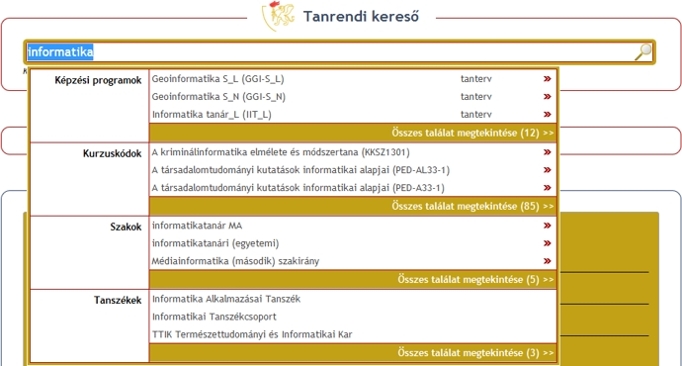The new, modern homepage of the University of Szeged had been launched with integrated relevance based search module. This university portal meets 21st century requirements and challenges, thus enabling WEB 2.0 based applications like online consultation and comment posting related to news and other text based contents.
Webra 3.0 Content Management System is able to handle more domains in one single administration system, thus enabling further faculties and departments of the University to join the new site with standardized- or with a new, unique design.

Online consultation hour for students and professors
Most interactive features can be found at the AGÓRA menu (at present only in Hungarian).
The vicechancellor is ready to consult online with students and professors of the university on allotted appointments. He is ready to answer questions regarding university related issues.
The online consulting hour module enables pre- and postmoderation of posts as well. It presents the vicechancellor’s posts with highlighted background color, shows premises and posting times, and provides administrators with an easy-to handle consulting hour opening- and closing facility on the administration interface.
The “Comment this!” menu (at present only in Hungarian: “Szóljunk hozzá!”) contains articles to which visitors of the site can make remarks. Under the article texts, it is possible to post opinions without registration or signing in. The comments appear ordered by date and hour of their posting.
“A tag cloud” …” is a visual depiction of user-generated tags, or simply the word content of a site, used typically to describe the content of web sites. Tags are usually single words and are typically listed alphabetically, and the importance of a tag is shown with font size or color.” (http://en.wikipedia.org/wiki/Tag_cloud)
Tags and keywords can be assigned to every piece of news and all articles on the portal on behalf of the Webra administration interface. As parameters of the Tagcloud module, we can set the number of tags appearing in the tagcloud and the number of its sections with different font sizes as well. By clicking on a selected tag, the system lists all the articles having that particular tag. The module adds up and calculates the most frequently used tags according to the above mentioned method.
The Fast search module can be found on the main page and in every other menus as well. When typing in a few characters, search process starts automatically, so that the results can be seen even during entering the keyword.
Another highlight of the search module is the result list sectioned by item types. At present, the module performs searches in the following databases:
- Web page: the entire site content is scanned for results.
- Phone book: the continuously updated Phonebook of the University is scanned.
Google: contents of all domains belonging to the University will be searched by an integrated Google application.

Integrated Semester schedule search (available at present only in Hungarian: www.u-szeged.hu/tanrend )
An extensive search was implemented for finding professors (2500+), faculties, qualification programs (1000+) and departments. Visitors of the site can browse and search the courses announced in the University’s academic system called ETR. Data from the ETR system will be synchronized periodically and retroactively for the last six months. Connection between the ETR and the Webra CMS is based on SOAP XML.
At the top of the page, we can select the current semester; which is also presented automatically by the system when loading the site.
Entering only 3 characters is sufficient to get a sectioned result list containing names of professors, faculties, qualification programs and departments, thus it is possible to search the most important properties of the ETR system.

More complex search queries can also be defined. By clicking on sheet names on the left side, values of the different conditions can be selected from a rolldown list. Items on the result list will match all preset conditions.
The schedule browser allows selecting from lists containing Professors, departments, qualification programs and faculties.
Result lists of the search and the browser option are to be ordered by their different columns by clicking on the column titles. Clicking on the titles once more, it is possible to switch between descending/ascending order.
